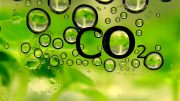Water reservoirs created by damming rivers could have significant impacts on the world’s carbon cycle and climate system that aren’t being accounted for, a new study concludes.
The study, conducted by researchers at the University of Waterloo and the Université libre de Bruxelles, appears in Nature Communications. It found that man-made dam reservoirs trap nearly one-fifth of the organic carbon moving from land to ocean via the world’s rivers.
While they can act as a significant source or sink for carbon dioxide, reservoirs are poorly represented in current climate change models.
“Dams don’t just have local environmental impacts. It’s clear they play a key role in the global carbon cycle and therefore the Earth’s climate,” said Philippe Van Cappellen, a Canada Excellence Research Chair in Ecohydrology at Waterloo and the study’s co-author. “For more accurate climate predictions, we need to better understand the impact of reservoirs.”
There are currently in excess of 70,000 large dams worldwide. With the continuing construction of new dams, more than 90 per cent of the world’s rivers will be fragmented by at least one dam within the next 15 years.
The study’s researchers used a novel method to determine what happens to organic carbon traveling down rivers and were able to capture the impact of more than 70 per cent of the world’s man-made reservoirs by volume. Their model links known physical parameters such as water flow and reservoir size with processes that determine the fate of organic carbon in impounded rivers.
“With the model used in this study, we can better quantify and predict how dams affect carbon exchanges on a global scale,” said Van Cappellen, a professor in Waterloo’s Department of Earth and Environmental Sciences.
In similar recent studies, the group of researchers also found that ongoing dam construction impedes the transport of nutrients such as phosphorus, nitrogen and silicon through river networks. The changes in nutrient flow have global impacts on the quality of water delivered to wetlands, lakes, floodplains and coastal marine areas downstream.
“We’re essentially increasing the number of artificial lakes every time we build a dam,” said Taylor Maavara, lead author and a PhD student at Waterloo. “This changes the flow of water and the materials it carries, including nutrients and carbon.”
May 17, 2017
This article was originally published on EurekAlert!. Read the original article.





